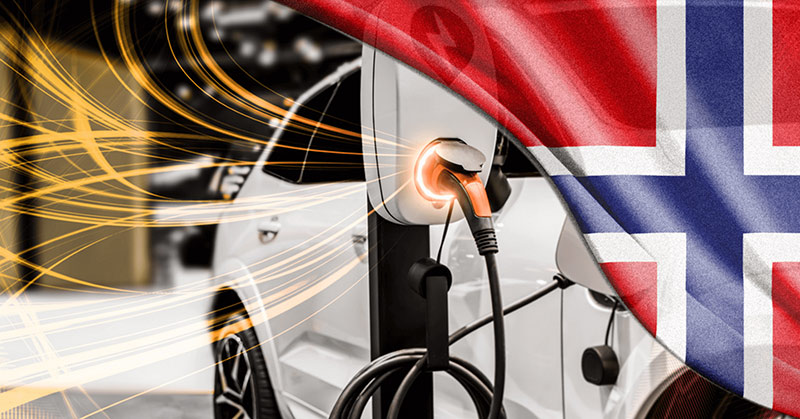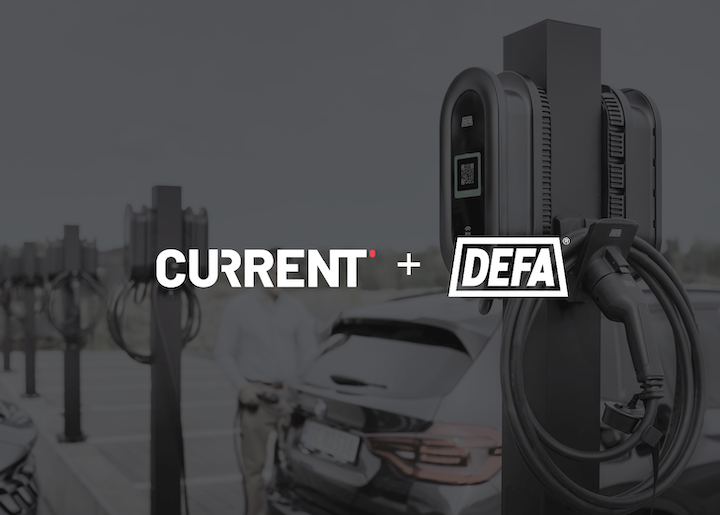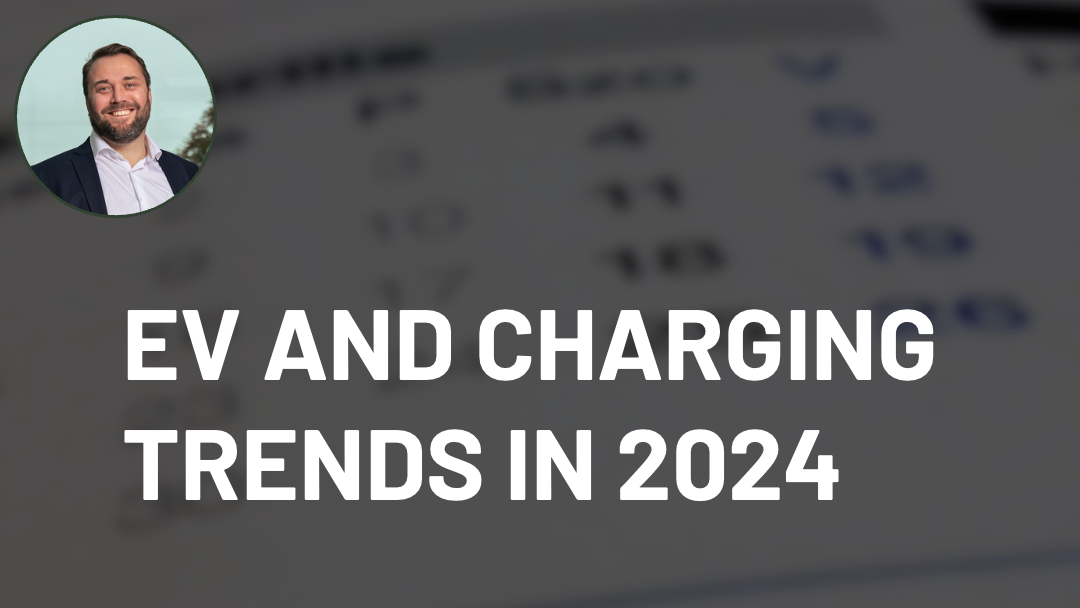
With the eyes of the world watching and learning, Norway continues to lead the charge in EV adoption. In November 2021, 73.8% of new cars sold in Norway were 100% electric. Combined with plug-in hybrid cars, which make up 21.1% of new cars sold, the total of electric vehicles is almost 95%.
Plus, it’s not just cars that have gone green in Norway: it’s buses, bikes, trains, and trams. Electric mobility is now deep in the lifeblood of a country that, according to Time Magazine, went from 1% to 65% market share of electric and plug-in hybrid cars in just a decade — all thanks to the country’s leadership.
What is Norway doing differently?
Active government participation and leadership in the march towards greater EV adoption have been key for Norway. Some of the incentives enabling this to work so well include:
- Tax exemptions for EVs
- Tax increases for internal combustion engine (ICE) vehicles
- Ban on new ICE vehicles by 2025
Most important, however, is the clarity of these policies. The Norwegian government has been careful to outline its intentions thoroughly, ensuring no confusion.
The speed with which Norway’s leaders have moved to shape these changes correlates directly with how effective they have been. Electric vehicles are more expensive than ICE vehicles to manufacture, hence the Norwegian government making them more affordable by slashing taxes.
According to Reuters, Svein Roald Hansen, a Norwegian Labour tax policy spokesman, clarified that this goes for all new EVs – not just the less expensive ones, he says: “The more expensive the car is, the bigger the subsidy. We have in the last couple of years received a lot of new models… there is plenty to choose from for those who still want to buy a car while there is a VAT exemption.”
Norway’s leaders are passionate about EVs fully taking the place of ICE vehicles. Christina Bu, general secretary of the Norwegian Electric Vehicle Association, said in a statement: “Norway shows the whole world that the electric car can replace cars powered by gasoline and diesel and be an important contribution in the fight to reduce CO2 emissions.”
As such, Norway has implemented 25% VAT, a carbon tax approaching 20%, and smaller additional taxes for weight, NOX, and car-scrapping. The knock-on effect of this is that electric vehicles will become more affordable than their ICE counterparts.
An additional unique feature of the way Norway works is that the vast majority of its power comes from renewable sources. The country has been using energy harnessed from rivers and waterfalls since the late 1800s, meaning green electricity is deeply embedded in the national psyche.
As Norway has modernized and developed, the focus on sustainability has evolved with it. There are now around 1,500 hydroelectric power plants in the country and they provide 96% of its electricity. With energy already decarbonized in Norway, and the strength of its dedication to green vehicles, the country is a shining example to a world that’s trying to catch up.
How other countries compare
Norway is a small country but government policy has made EVs more affordable than in other countries. As well as reducing tax on EVs, a Norwegian customer is able to buy an EV for around the same price as an ICE car, while other nations have to pay a great deal more for the latest EV technology. However, many other countries are still putting in the work to improve the infrastructure and encourage the adoption of EVs.
In the US, there’s some movement towards EV adoption. President Joe Biden has passed a $7.5bn infrastructure bill to build a nationwide charging network. Then, during the most recent Super Bowl, a General Motors advert promised 30 EV models in the US by 2025. It’s a strong start, but policy changes are needed to drive real change.
Countries such as Sweden and New Zealand have made impressive strides in implementing EV tax policies. The EU market is gradually being infiltrated by plug-in hybrids and fully electric vehicles; new electric car sales grew from 700 units in 2010 to around 550,000 in 2019. In 2020, electric car registrations accounted for 11% of newly registered passenger cars.
In that same year, the share of all-electric vehicle types increased across Europe compared to the previous year, particularly in Scandinavia. Germany, France, and the UK accounted for around 60% of total electric registrations, and the UK is making other important moves towards a greener future, including banning the sale of new ICE cars from 2030. By this point, the British government hopes one in three cars will be electric — the current statistic is one in 100.
Other countries may be talking the talk, and walking at least some of the walk, but they’ve got a long way to go to catch up with Norway.
Why are other countries lagging behind?
“We’ve got to get the charging infrastructure ahead of the game to enable us to progress from the quite specific adoption that we have at the moment into mass adoption,” Alex Smith, the managing director of Volkswagen Group UK, told The Guardian. “And we’re not there yet.”
Smith and other experts say that the main reason widespread EV adoption hasn’t happened yet in the UK is the lack of a broad, dependable charging network. That hasn’t stopped people from buying, though, with EVs accounting for just under 12% of sales in 2021, but that means there’s already a disconnect between people buying EVs and the infrastructure.
Some areas in the UK have access to substantially more chargers than other places. And it’s not just the numbers of chargers, but also their reliability and how quickly they charge. Sometimes, chargers are simply out of order or unavailable, potentially leaving EV drivers in tricky situations — something that still provides a massive barrier to entry. At the start of this year, there were 28,375 public EV chargers available in the UK — only 5,156 of which are rapid chargers able to charge at 50kW+.
In the Netherlands, a country substantially smaller than the UK, there were 66,665 public chargers available by November 2021. In Germany, there were 44,538. Policy is an issue for many countries and the government’s plan to ensure that businesses with large car parks in England must install at least one EV charger has been delayed. On top of that, EV grants were cut twice last year, making electric cars yet more expensive for drivers.
Experts believe that major infrastructure investments are required by the UK government in order to meet its goal of banning new ICE cars by 2030. According to The Guardian, Edmund King, president of the AA, said: “Whilst great progress has been made, there is still much to do to convince drivers on the number, and importantly reliability, of charge posts.” In response to criticism, a 10-fold increase in UK charging points has now been promised, which would bring the number to 300,000 by 2030.
Europe is expected to have around 130 million EVs on the roads by 2035, but it will need around 65 million chargers to support that.
Besides a lack of clear guidance from leaders, another issue in some countries is grid capacity – particularly in the UK and Germany. Many nations are at least partially reliant on gas for energy, whereas Norway relies almost entirely on electricity – most of which is renewable – giving it another advantage. The aging grids in other countries might run into trouble as EV adoption continues to grow, unable to cope with surges at peak times and creating instability.
Additionally, much of the world is far behind Norway when it comes to renewable energy. In the US in 2020, renewable energy sources accounted for around 12.6% of total energy consumption. That same year, renewable energy supplied 43% of the power used in the UK, and percentages in Europe range from 10.7% in Malta to 83.7% in Iceland. Without the help of renewable energy – which, at the risk of sounding like a broken record, is down to policy – many countries may struggle to adapt to the shift ahead.
What can we learn from Norway’s EV adoption?
Many people lack faith in their leaders to make the right choices and guide them properly. An RSC survey found that 63% of UK drivers aren’t confident the British government will create a suitable, fit-for-purpose infrastructure by 2035. It also found that, despite the fact that new ICE cars will be banned by 2030 and hybrids will be banned by 2035, 34% have no intention of purchasing a fully electric vehicle in the next decade – suggesting that they don’t believe the government will live up to its promises.
Vitally, 46% don’t feel they have enough information to make an informed decision about their future vehicle. 57% are worried about the lack of recycling options for EV batteries, and 63% support the government providing funding for the necessary recycling facilities. Crucially, people need to have good incentives to make this change.
The RSC survey highlights a great deal of fear and confusion, worsened by a lack of clear information and guidance, misinformation, and little concrete reason to believe that the world will be ready for the major changes that governments are proposing. Leaders across the world should look to nations like Norway for inspiration regarding how clarity of messaging and strict policy-making can lead the change they’re aiming to achieve.
The role of technology
Something that will make a major difference in how EV technology is adopted is smart charging, which allows intelligent management of how your EV charges. In Norway, smart charging aims to peak shave – this will reduce the strain on the grid at peak times, such as 5-6 pm when people arrive home from work. In the UK or Germany, where the grids are less robust, smart charging will likely be a necessity.
For a Norwegian city of 50,000 people, if all inhabitants have an EV, the cost of investment into the local grid would be an estimated £200m. With smart charging applied, the investment is zero. Even for the UK – which has a much lower-capacity grid – smart charging could reduce the investment by 90%, at the very least. Without smart charging, widespread EV adoption may not be viable at all even in highly developed countries.
Smart charging also needs to be supported by the open charge point protocol (OCCP), which standardizes how the EV charger talks to the charge point management system. It allows for better customer experience and data collection, enabling accurate reporting and high-quality functionality.
At CURRENT, we highly recommend that charging device hardware producers seek OCCP certification, otherwise key functionality can be lost or overly simplified. We are at the very heart of the EV movement – based in Norway and with many years of technological expertise – and we know what the future of EV will look like. Standardization of EV chargers and their software through OCCP has a distinct domino effect: OCCP certification means more smart chargers in public places, which creates the infrastructure EVs need. This can open the door for greater EV adoption.
While Norway leads the EV revolution, other nations must look to the nation’s leadership, its passion for renewable energy, and its dedication to its sustainable goals. Without faith in those things, the greener future we desperately need won’t happen as it should – but we can achieve a far brighter tomorrow with the right intentions.



